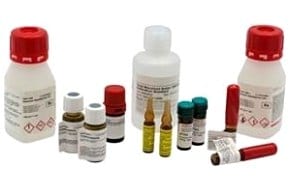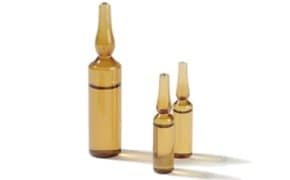Small Molecule HPLC

Analysis of Small Molecules
A small molecule refers to a compound of low molecular weight (typically less than 900 daltons). Some common examples of small molecules include amino acids, lipids, sugars, fatty acids, alkaloids, and others.
Different methods are available for the separation of small molecules including High Performance liquid chromatography (HPLC), liquid chromatography (LC), gas chromatography (GC), thin-layer chromatography (TLC) and capillary electrophoresis (CE). Furthermore, the options for their identification include nuclear magnetic resonance spectroscopy (NMR) or mass spectrometry (MS). Liquid chromatography coupled with mass spectrometry (LC-MS) became a key technique for the identification of small molecules during recent years.
Getting the best possible results in the high-performance liquid chromatography (HPLC), UHPLC or LC-MS analysis of small molecules depends on the selection of the best suitable stationary phase and mobile phase conditions. The chemistry of the analyte is key for selecting the best suitable column chemistry. Other aspects such as speed, sample matrix, and number of compounds define the best suitable base material for the stationary phase.
Find Chromatograms
Related Technical Articles
Related Protocols
- HPLC separation of 17 important cannabinoids including CBD, delta 9 THC and THCA. Read the application note
- Complete workflow for the comprehensive analysis of terpenes in cannabis
- Amino Acid Analysis is the suitable tool for precise determination of protein quantities but also provides detailed information regarding the relative amino.
- GB method with Ascentis® Express C30 column achieves baseline resolution for Vitamin A and E critical pair.
- Alkylphenols are used in various industries like paper manufacturing and pesticide formulations.
- See All (103)
Find More Articles and Protocols
HPLC of Small Molecules
The HPLC analysis of small molecules most often is performed in reversed-phase separation mode. For separation of polar compounds hydrophilic interaction chromatography (HILIC) and normal-phase chromatography are suitable as well, with HILIC being the preferred method. For the separation of ionic compounds, ion-exchange separation modes and for inorganic anions or cations, ion chromatography can also be used.
The HPLC column is packed with either fully porous silica particles, superficially porous silica particles, polymeric particles or consists of a monolithic silica rod as the stationary phase. In addition, alumina oxide, zirconia particles and Carbon particles are used. The typical pore size of the stationary phase material for small molecule separation is in the range of 60 Å - 160 Å. For HPLC the typical particle size of the stationary phase ranges from 3 µm to 5 µm, for UHPLC smaller particles sizes, typically 2 µm or below, are used. Different column selectivities (modifications) can be attached to the stationary phase. A C18 alkyl chain is the most commonly used column chemistry in reversed phase (RP) chromatography. Nevertheless, other modifications, such as C30, C8, Phenyl, Pentaflourophenyl and a broad range of more polar modifications as well as modifications with ion-exchange or chiral properties enable the separation of almost all compounds soluble in liquids. The mobile phase for RP-HPLC typically consists of an aqueous buffer or water and water-miscible organic solvents like acetonitrile or methanol.
HPLC Sample Preparation
Complex and matrix-rich samples, such as food, beverages, cosmetics, biological samples and matrix-rich pharmaceutical formulations (e.g. cream, syrup) require efficient sample preparation protocols to remove unwanted components and selectively extract the analyte of interest. This is critical if a stationary phase with very small particle sizes as in UHPLC, where particles of 2 µm or below are used. Common sample preparation methods are Liquid-liquid extraction, Solid phase extraction (SPE) and for biological samples also protein precipitation beside filtration. In addition to the selective elution of the target compound and pre-concentration, the main purpose of sample preparation is to protect the HPLC stationary phase from clogging caused by the sample matrix. HPLC columns based on monolithic silica can tolerate matrix to a high extend and require much less sample preparation than particulate columns.
Derivatization
For some molecules derivatization is required, either before (pre-column) or after (post-column) the HPLC separation. The derivatization converts molecules into their derivatives for better sensitivity or chromatographic retention in HPLC. Chemical reagents, with desirable physical and chemical properties, are used for the required derivatization.
Highlights
Calculate the run-time and solvent-consumption savings when transferring method from HPLC to UHPLC.
To continue reading please sign in or create an account.
Don't Have An Account?





